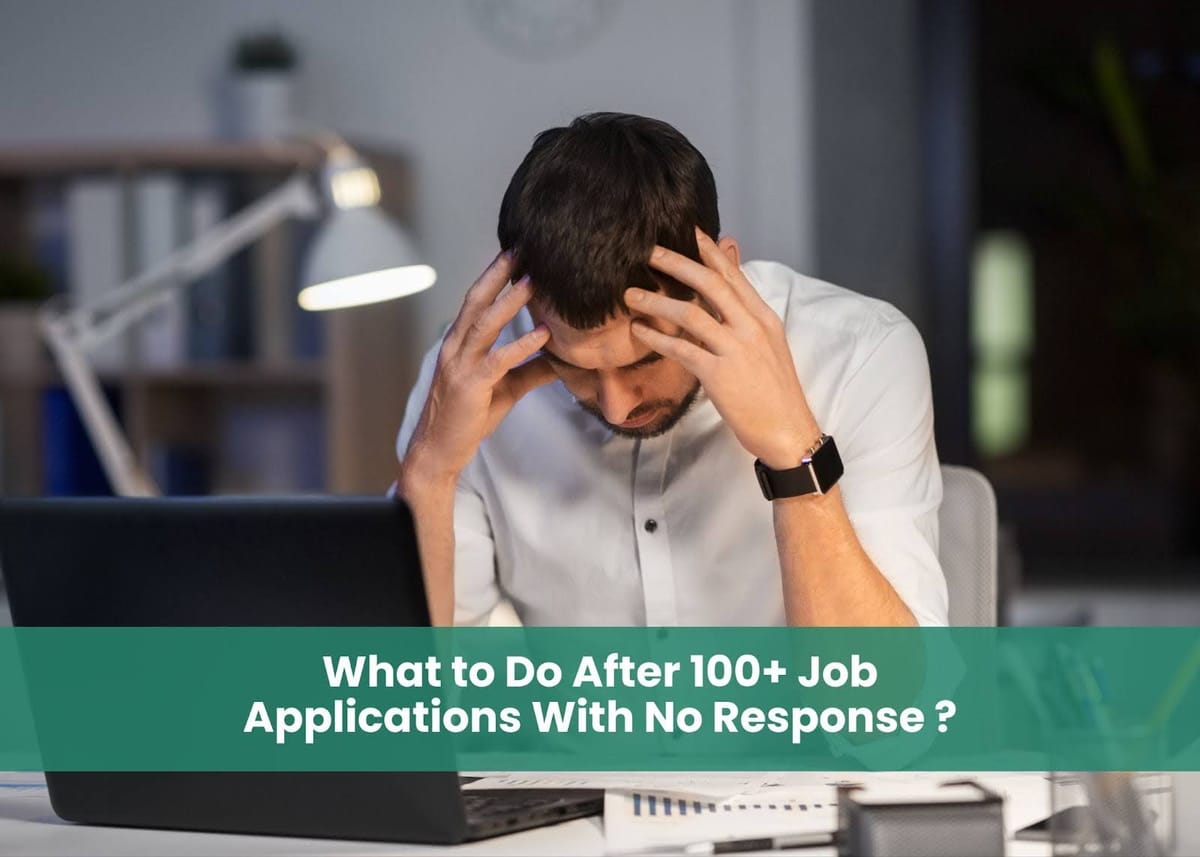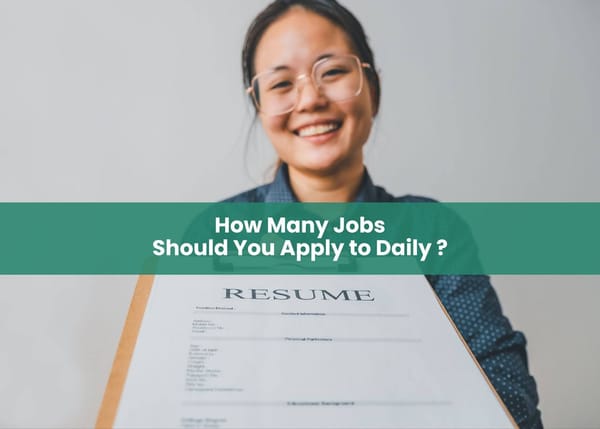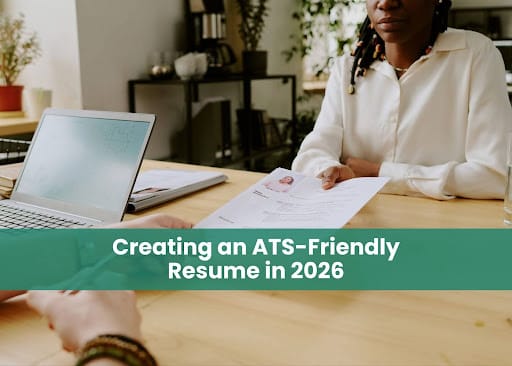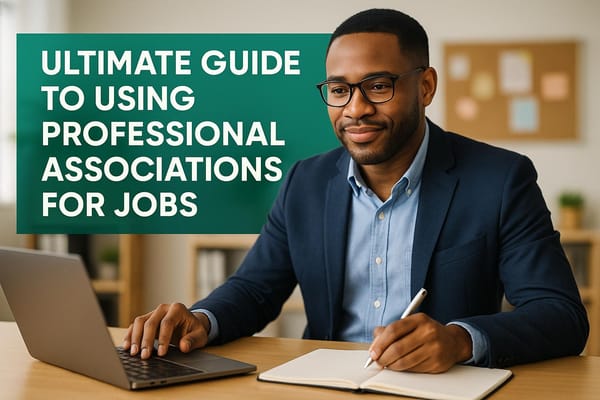What to Do After 100+ Job Applications With No Response
Stop job application rejection. Get interview callbacks by fixing your resume for ATS, customizing applications, and using proven strategies that work.

You've sent out 100, maybe 200 job applications. You've customized your resume. You've written thoughtful cover letters. Yet, your inbox remains painfully silent. No interview callbacks. No rejections. Just... nothing.
If you're experiencing job search burnout, you're not alone. The reality is this: mass-applying doesn't work anymore. When you're facing constant job application rejection, it's time to completely change your approach. The good news? There are specific, proven steps you can take right now to turn things around and finally start getting responses.
Why You're Not Hearing Back From Job Applications
Before you can fix the problem, you need to understand why no job offers are coming your way. Here are the most common reasons job seekers face no interview callbacks:
Your resume isn't getting past the ATS. Most companies use Applicant Tracking Systems to filter applications before a human ever sees them. If your resume lacks the right keywords or has formatting issues, it gets rejected automatically. Even small ATS parsing errors can kill your chances.
You're applying to the wrong roles. If you're targeting positions that are too senior or too junior for your experience level, hiring managers will skip right past your application. A senior marketing manager position won't consider someone with only coordinator experience, no matter how strong your application is.
Your applications aren't customized. Recruiters can spot generic applications from a mile away. When your resume and cover letter don't specifically address the job requirements, you signal that you're just spray-and-pray applying, which immediately moves you to the "no" pile.
You're one of hundreds of applicants. Popular job postings can receive 200-400 applications. Without a referral or connection to make you stand out, you're competing against overwhelming odds.
Stop Mass-Applying: Focus on Quality Over Quantity
If you've sent 100+ applications with no interview callbacks, your strategy is broken. Mass-applying creates job application fatigue without results. Here's what to do instead:
Research before you apply. Spend 15-20 minutes learning about the company, reading recent news, checking their LinkedIn page, and understanding their culture. This research will inform how you customize your application.
Apply only to roles you're actually qualified for. Be honest about whether you meet 70%+ of the requirements. If you're stretching to meet even 50%, you're wasting time and contributing to your job search burnout.
Prioritize companies you actually want to work for. Would you be genuinely excited to receive an offer from this company? If not, don't apply. Focus your energy on opportunities that matter to you.
Quality over quantity might feel counterintuitive when you're desperate for any response, but it works. Three thoughtful, targeted applications will outperform thirty generic ones every single time.
Fix Your Resume and Cover Letter to Stop Job Application Rejection
If you're experiencing consistent job application rejection, your application materials likely need work. Here's how to fix them:
Optimize for ATS systems. Use resume keyword research to identify the specific terms and phrases from job descriptions in your field. Your resume needs to include these keywords naturally to pass the initial screening.
Show results, not just responsibilities. Instead of "Managed social media accounts," write "Grew Instagram following by 150% and increased engagement rates by 40% through targeted content strategy." Quantifiable achievements prove you can deliver results.
Make it skimmable. Hiring managers spend 6-7 seconds on initial resume reviews. Use bullet points, bold text for key achievements, and plenty of white space. If they can't quickly find what they're looking for, you won't get interview callbacks.
Customize your cover letter. Don't just restate your resume. Explain why you're interested in this specific company and role, and connect your experience directly to their needs. Make it about them, not you.
Check for errors. Typos, grammatical mistakes, and poor formatting signal carelessness. One typo can be the difference between an interview and silence.
If you're struggling with these updates, Scale Jobs offers free tools, including an ATS resume checker and cover letter generator, to help you improve your application materials.
Build Your Network and Get Referrals to Reduce No-Interview Callbacks
When you're stuck in a cycle of job application rejection, networking becomes your most powerful tool. Referrals can increase your chances of getting an interview by 5-10x compared to cold applications.
Reach out to connections: message former colleagues, classmates, and industry contacts. Don't ask for a job directly; ask for a conversation, advice, or insights about their company. Build relationships first.
Connect with employees at target companies. Find people who work where you want to work on LinkedIn. Send a brief, personalized message expressing genuine interest in their work and asking if they'd be willing to share insights about the company culture.
Attend industry events. Whether virtual or in-person, conferences, webinars, and meetups put you in front of people who might know about opportunities. Many jobs are filled through word-of-mouth before they're ever posted.
Provide value first. Share relevant articles, make introductions, and offer your expertise. When you help others without expecting anything in return, they remember you when opportunities arise.
Networking takes time, which is why it's crucial to start now rather than waiting until job search burnout has completely drained your motivation.
When to Consider a Career Pivot Strategy
Sometimes, persistent no-interview callbacks signal that it's time to consider a career pivot strategy. This doesn't mean giving up; it means being strategic about your options.
Look at adjacent roles. If you're a marketing coordinator struggling to land manager roles, consider lateral moves into related areas like content strategy, email marketing, or social media management. Building expertise in a specific area can open doors that general applications don't.
Explore contract or freelance work. Temporary positions get your foot in the door, build your resume, and often convert to full-time roles. They also reduce job hunting stress by providing income while you continue your search.
Consider smaller companies or different industries. If you've been targeting big tech companies or saturated industries, expand your horizons. Smaller organizations often have less competition and faster hiring processes, reducing job application fatigue.
Upskill strategically. Identify gaps between your current qualifications and your target roles. Take online courses, earn certifications, or work on portfolio projects that demonstrate capabilities employers want to see.
A career pivot strategy doesn't mean starting over from scratch. It means being flexible and realistic about the path forward, especially when your current approach isn't working.
How to Handle Job Search Burnout and Stay Motivated
Job application fatigue is real. When you're dealing with job search depression and job hunting stress, your mental health suffers, and ironically, that makes your job search even less effective.
Here's how to manage the emotional toll:
Set boundaries. Don't spend 8 hours a day applying to jobs. Limit yourself to 2-3 quality applications per day instead of 20 rushed ones. This reduces job application fatigue while actually improving your results.
Take breaks. Step away from the computer. Go for walks. Exercise. Connect with friends. Job search burnout happens when you make job hunting your entire life. You need space to recharge.
Celebrate small wins. Did you get a response, even if it was a rejection? That's better than silence. Did you have a good networking conversation? That counts. Acknowledging progress helps counter job search depression.
Talk to someone. Whether it's a friend, family member, or career coach, sharing your frustrations helps. Job hunting stress is compounded when you bottle it up and go through the process alone.
Remember, rejection isn't personal. Hiring decisions depend on budget, timing, internal candidates, and dozens of factors outside your control. Don't let job application rejection define your worth.
Let Someone Else Handle the Applications
Here's something most people struggling with job application fatigue don't consider: you don't have to do this alone.
Job application services exist specifically to solve the problem of no interview callbacks. Unlike automated tools that just blast your resume to hundreds of companies (which doesn't work), human-assisted job application services combine real people with smart technology to submit quality applications on your behalf.
Here's how it works: You provide your background, preferences, and target roles. A dedicated assistant then researches appropriate positions, customizes your resume and cover letter for each one, and submits applications on your behalf. This approach tackles job search burnout by removing the most tedious, time-consuming part of the process.
The benefits go beyond saving time. Professional applicants know how to optimize for ATS systems, write compelling cover letters, and target the right roles, all the things that prevent job application rejection. Many job seekers see response rates increase significantly because their applications are simply better.
When evaluating how much it costs to hire a job application service, consider the alternative: months of job search depression, wasted time on applications going nowhere, and the opportunity cost of not landing a job sooner.
Scale Jobs offers this exact service, applying to hundreds of relevant positions with customized materials while you focus on networking and interview preparation. For job seekers experiencing job hunting stress and job search burnout, outsourcing the application process often makes the difference between continuing to struggle and finally landing interviews.
Ready to Break the Cycle of Job Application Rejection?
If you've sent 100+ applications with no interview callbacks, you now know what needs to change. Stop mass-applying. Fix your resume and cover letter to beat ATS systems. Invest time in networking. Consider whether a career pivot strategy makes sense. And most importantly, don't let job search burnout and job search depression convince you that something's wrong with you; your strategy just needs adjustment.
The job search doesn't have to be this hard. Whether you choose to refine your approach yourself or partner with a service that handles applications for you, taking action is what breaks the cycle of job application fatigue.
Thousands of people were exactly where you are right now, stuck, frustrated, and wondering why no job offers were coming through. They changed their approach, got strategic about their search, and landed roles they're excited about. You can too.
Stop spinning your wheels with applications that go nowhere. Start getting the interview callbacks you deserve.
FAQs
Q. How long should I wait before following up after submitting a job application?
Wait 7-10 days after submitting your application before sending a polite follow-up email. If you don't hear back after a second follow-up, it's best to move on and focus your energy on other opportunities.
Q. Is it normal to send 100+ job applications without getting any responses?
While it's common to face job application rejection, sending 100+ applications without any callbacks signals your strategy needs adjustment. Most successful job seekers get responses within 20-30 targeted applications when their materials are optimized and applications are customized.
Q. How many job applications should I submit per day?
Focus on 2-3 quality applications per day rather than submitting 10-20 rushed ones. Thoroughly researching companies and customizing your materials for each role significantly increases your response rate and reduces job application fatigue.
Q. Why am I not getting interview callbacks even though I'm qualified? Common reasons include ATS systems filtering out your resume due to missing keywords, generic applications that don't address specific job requirements, applying to the wrong-level positions, or a lack of referrals to help you stand out among hundreds of applicants.
Q. When should I consider hiring a job application service?
Consider a job application service when you're experiencing severe job search burnout, have limited time to apply while employed, consistently get no responses despite customizing applications, or need expert help optimizing your materials for better results.




